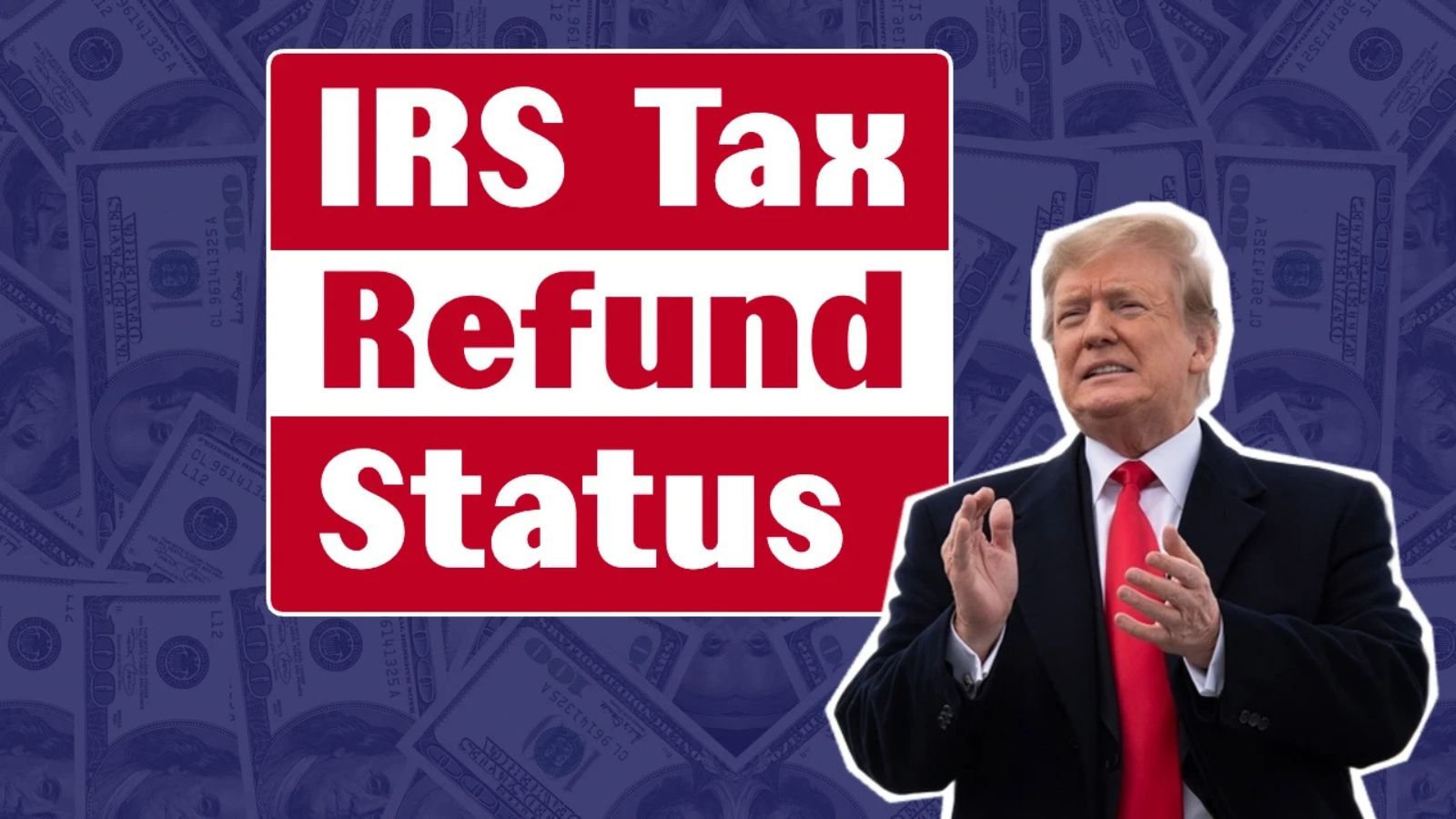Every year, millions of Americans file their income tax returns with the Internal Revenue Service (IRS). While many taxpayers meet their exact liability, there are countless individuals who end up paying more taxes than required. Whenever this happens, the IRS processes a refund to return the excess amount to the taxpayer. This process is straightforward, but it requires patience and careful filing. With the digital era making everything faster, most people now track their returns through the IRS Tax Refund Status Check 2025 feature, which provides real-time updates on refunds.
For those eagerly awaiting their refund, this feature has become an essential tool. It helps taxpayers know where their money is in the process, whether it has been accepted, processed, or approved for payment. Refunds are not just a financial adjustment; they provide much-needed relief for households, particularly during times of inflation and rising expenses.
This comprehensive guide explains what the IRS Tax Refund Status Check 2025 is, how it works, deadlines, refund schedules, possible delays, and all the key details taxpayers should know.
Why the IRS Tax Refund Status Check 2025 Matters
For any taxpayer who has overpaid, the IRS refund system ensures that money is credited back. The refund amount depends on how much extra tax has been deducted compared to the taxpayer’s actual liability. With the IRS Tax Refund Status Check 2025, citizens can verify the progress of their refund application. This initiative by the IRS not only provides transparency but also relieves taxpayers from uncertainty.
Refunds are typically processed within three weeks (21 days) when returns are filed electronically. However, those using paper filing may experience longer timelines. Delays can also occur if returns contain errors, mismatched information, or if the taxpayer has claimed specific credits such as the Earned Income Tax Credit (EITC) or the Additional Child Tax Credit (ACTC).
IRS Tax Refund Status Check 2025 – At a Glance
Here’s a quick overview of how the system functions and what taxpayers can expect in 2025:
| Category | Details |
|---|---|
| Department | Internal Revenue Service |
| Program | IRS Tax Refund Status Check 2025 |
| Refund Type | One-time payment (based on excess tax paid) |
| Refund Mode | Direct Deposit (Electronic) or Paper Check |
| Fastest Refund Timeline | 21 days (with e-filing and direct deposit) |
| Possible Delay Reasons | Errors, paper filing, EITC/ACTC claims |
| Refund Tracking Tool | “Where’s My Refund?” portal on IRS website |
| Category | Government Aid |
| Official Website | https://www.irs.gov/ |
How to Use the IRS Tax Refund Status Check 2025
Checking your refund status online is simple and can be done in just a few steps. The IRS provides the Where’s My Refund? tool, available on both desktop and mobile devices.
Step-by-Step Guide
- Visit the official IRS website: https://www.irs.gov/
- On the homepage, click “Where’s My Refund?”.
- Enter your Social Security Number (SSN) accurately.
- Choose your filing status (single, married filing jointly, etc.).
- Provide the exact refund amount from your tax return.
- Click Submit to check your current refund status.
The system will then display whether your return is:
- Received (IRS has your return but not yet processed it)
- Approved (refund confirmed and scheduled)
- Sent (funds are on their way via direct deposit or paper check)
Filing and Refund Deadlines for 2025
Every year, the IRS sets deadlines for tax return submissions. Missing these deadlines may not only delay refunds but can also lead to penalties.
Federal Tax Filing Deadlines (2025):
- All Other States: April 15, 2025
- Hawaii: April 20, 2025
- Iowa: April 30, 2025
- Delaware: April 30, 2025
- Louisiana: May 15, 2025
Refund Processing Timelines (Estimated):
| Filing Method | Refund Timeline |
|---|---|
| E-file + Direct Deposit | Within 21 days |
| E-file + Paper Check | Up to 1 month |
| Paper Return + Direct Deposit | Around 8 weeks |
| Paper Return + Paper Check | Around 6 weeks |
As shown, electronic filing paired with direct deposit is by far the fastest way to get your refund. Paper filing, on the other hand, can extend the wait significantly.
Reasons for Refund Delays
While the IRS tries to process refunds quickly, several factors may cause delays in IRS Tax Refund Status Check 2025 updates. Some common reasons include:
- Errors in Filing: Incorrect Social Security numbers, mismatched names, or mathematical errors can slow down processing.
- Claiming Credits: Refunds involving the Earned Income Tax Credit (EITC) or the Additional Child Tax Credit (ACTC) often require extra verification.
- Paper Filing: Submitting physical forms rather than using e-filing delays processing.
- Identity Verification Issues: If the IRS suspects fraud or needs additional verification, refunds can be temporarily held.
What You Need for IRS Tax Refund Status Check 2025
To avoid errors and make your status check smooth, ensure you have the following details handy:
- Date of filing your tax return
- Social Security Number (SSN)
- Your filing status (single, married filing jointly, etc.)
- Exact refund amount expected as per your filed return
Having precise details ensures that the IRS system can quickly fetch your refund status without delays or mismatched data issues.
Latest Updates on IRS Tax Refund Status Check 2025
For the 2025 tax year, the IRS has confirmed that:
- Refunds will be processed faster for those using e-filing + direct deposit (21 days).
- Paper returns will continue to take longer due to manual verification and processing.
- Individuals claiming certain credits may experience slight delays because additional checks are required.
- Inflation-adjusted refunds and credits are aimed at providing taxpayers with more financial relief.
The IRS encourages taxpayers to keep checking their IRS Tax Refund Status Check 2025 through the official portal rather than relying on third-party websites or agents, which may provide misleading information.
Tips to Receive Your Refund Faster
- Opt for E-Filing: Electronic filing minimizes human errors and ensures faster processing.
- Choose Direct Deposit: It is quicker than waiting for a paper check to arrive by mail.
- Double-Check Information: Ensure your SSN, refund amount, and filing status are entered correctly.
- File Early: Submitting your returns as early as possible helps avoid last-minute processing delays.
- Avoid Common Mistakes: Carefully review deductions, credits, and math before submission.
IRS Customer Support for Refund Queries
If you face delays or cannot track your refund online, the IRS provides direct support:
- IRS Refund Hotline: 1-800-829-1954
- IRS General Helpline: 1-800-829-1040
- TTY/TDD for Hearing Impaired: 1-800-829-4059
Before calling, make sure you have your SSN, filing status, and refund amount ready for quick assistance.
Frequently Asked Questions (FAQs)
Q1: Who qualifies for the IRS refund in 2025?
Anyone who has paid more taxes than their actual liability will be eligible for a refund under the IRS Tax Refund Status Check 2025 program.
Q2: How long will it take to receive my refund if I e-file?
Most taxpayers receive their refunds within 21 days of filing electronically with direct deposit.
Q3: What if I file by paper?
Paper filers may need to wait 6–8 weeks depending on whether they opt for direct deposit or a mailed paper check.
Q4: Can refunds be delayed for verification?
Yes. Claims involving EITC or ACTC often require additional checks, which may delay the refund process.
Q5: What documents are required to check my refund status online?
You’ll need your SSN, filing status, refund amount, and the date of filing.
Final Thoughts
The IRS Tax Refund Status Check 2025 is an essential tool for taxpayers awaiting refunds. By using the official “Where’s My Refund?” portal, individuals can track the exact stage of their refund process—whether it’s received, approved, or sent. While electronic filing and direct deposit remain the fastest ways to receive refunds, delays can still occur due to errors, paper filing, or special credits.
For millions of Americans, tax refunds act as a financial cushion, helping with bills, savings, or unexpected expenses. Staying informed and checking refund status regularly ensures peace of mind and transparency. The IRS continues to improve its processes each year, making refund tracking easier and more efficient.
Some Important Link
| Download News APP | Click Here |
| WhatsApp Group | Click Here |
| Home Page | Click Here |





